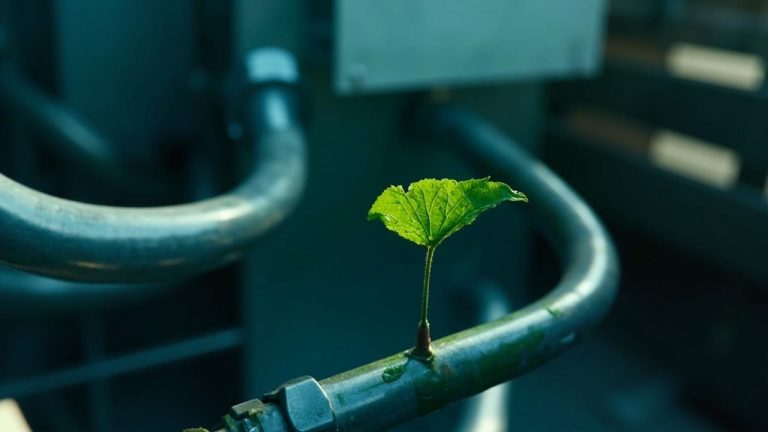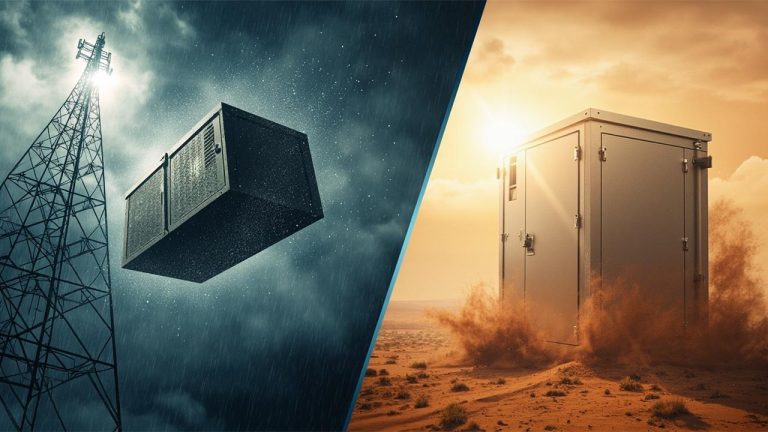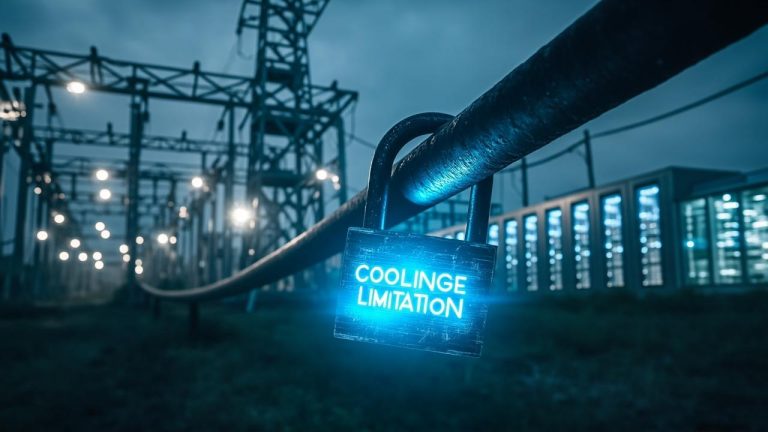Introduction
Industrial cooling processes consume staggering amounts of water, and *water reclamation* is key. Consider this: industrial cooling systems alone account for a significant percentage of global water withdrawals. This heavy reliance on water puts a tremendous strain on our planet’s finite resources, especially in regions already facing water scarcity.
Traditional once-through cooling systems, which draw in vast quantities of water, use it for cooling, and then discharge it back into the environment, exacerbate the problem. This process not only depletes water supplies but also leads to environmental concerns like thermal pollution and the introduction of harmful chemicals into waterways.
These once-through systems are becoming increasingly unsustainable from both an environmental and an economic standpoint. Regulations surrounding water usage and discharge are becoming stricter, forcing facility managers and building owners to seek more responsible and efficient cooling solutions. Furthermore, the rising cost of water and wastewater treatment adds to the financial burden of operating traditional cooling systems. Therefore, there is a growing need for innovative approaches that minimize water consumption, reduce environmental impact, and offer long-term cost savings.
Closed-loop cooling systems offer a compelling alternative, representing a significant step towards sustainable cooling practices. These systems operate on the principle of recirculating and reusing cooling water, drastically reducing the need for continuous water intake.
By implementing a closed-loop system, facilities can significantly lessen their environmental footprint while also realizing substantial cost savings. This blog post will explore the numerous advantages of closed-loop cooling systems, provide a comprehensive guide to implementation, and highlight crucial considerations for maximizing performance and efficiency.
Understanding Closed-Loop Cooling Systems
Closed-loop cooling systems operate on a simple yet effective principle: recirculating the same water continuously to absorb and dissipate heat. Unlike once-through systems that draw water from a source, use it for cooling, and then discharge it, closed-loop systems minimize water consumption by repeatedly cycling the same water supply.
Think of it like the cooling system in your car – the same coolant is continuously circulated to regulate engine temperature. This continuous circulation is the core of its efficiency and sustainability.
The typical closed-loop system comprises several key components working in harmony. A cooling tower or chiller is the primary heat rejection device. The cooling tower uses evaporation to cool the water, while a chiller uses a refrigeration cycle. A pump circulates the water through a network of pipes to the heat source, such as equipment or processes that generate heat.
A heat exchanger transfers the heat from the equipment to the cooling water. Finally, control systems monitor and regulate the system’s operation, ensuring optimal performance and efficiency. Furthermore, the implementation of effective water reclamation strategies within the system significantly reduces water waste.
To better understand the benefits, it’s helpful to compare closed-loop systems to their once-through counterparts:
The Benefits Unveiled
Switching to a closed-loop cooling system offers a multitude of advantages that extend beyond simple operational efficiency. The most prominent benefit is the significant reduction in water consumption. Unlike traditional once-through systems that continuously draw fresh water and discharge it after a single use, closed-loop systems recirculate the same water supply, minimizing the need for constant replenishment.
Closed-loop systems can reduce water consumption by up to 95% depending on the specific application and climate. This dramatic decrease not only conserves a precious natural resource but also shields your organization from the escalating costs associated with water procurement and disposal.
The financial advantages of closed-loop cooling are multifaceted. Reduced water bills are just the beginning. Closed-loop systems also typically require less chemical treatment compared to once-through systems. This is because the smaller, contained water volume is easier to manage and maintain at optimal quality.
Furthermore, in some cases, closed-loop systems can lead to lower energy consumption. While this is not always the case and depends on factors like the specific cooling technology employed (e.g. cooling tower vs. chiller), optimized closed-loop systems can improve overall energy efficiency. In addition, the implementation of a water reclamation system can lead to reduced water consumption costs.
Beyond the economic benefits, adopting a closed-loop cooling system demonstrates a strong commitment to environmental responsibility. By significantly decreasing water withdrawals, you lessen the strain on local water resources, particularly in regions facing water scarcity. Closed-loop systems also minimize wastewater discharge, reducing the potential for thermal pollution and the introduction of harmful chemicals into aquatic ecosystems.
Furthermore, implementing a closed-loop system can position your organization favorably in the face of increasingly stringent water regulations. Many municipalities and governmental bodies are enacting stricter rules regarding water usage and wastewater discharge, making closed-loop systems a proactive solution for ensuring compliance and avoiding potential penalties.
Here is a list of benefits:
- Reduced water bills
- Reduced chemical treatment costs
- Lower energy consumption
- Less thermal pollution
Is Closed-Loop Cooling Right for You? Assessing Your Needs and Feasibility
First, consider the unique characteristics of your building or facility. What is the square footage that requires cooling, and what type of activities take place within the space? A data center, for instance, will have vastly different cooling demands than a commercial office building, even if they are of comparable size. Understanding your peak cooling load, measured in tons or BTUs, is critical. This will help determine the size and capacity of the closed-loop system you require.
Additionally, evaluate the building’s existing infrastructure. Are there existing cooling towers or chillers that could be retrofitted or integrated into a closed-loop design? What is the current piping configuration and how easily can it be adapted? A thorough assessment of existing infrastructure can save significant time and money during implementation.
Budgetary Considerations
Of course, budget plays a significant role in deciding whether a closed-loop system is feasible. While the long-term operational savings of a closed-loop system can be substantial, the initial investment can be higher than traditional cooling methods. Factor in the costs of engineering design, equipment purchase (cooling towers, chillers, pumps, pipes, controls), installation, and commissioning.
Also, consider ongoing expenses like water treatment chemicals, electricity for pumps and fans, and routine maintenance. Perform a detailed cost-benefit analysis that compares the lifecycle costs of a closed-loop system to your current cooling method, taking into account water rates, energy prices, and potential regulatory penalties for excessive water use or wastewater discharge.
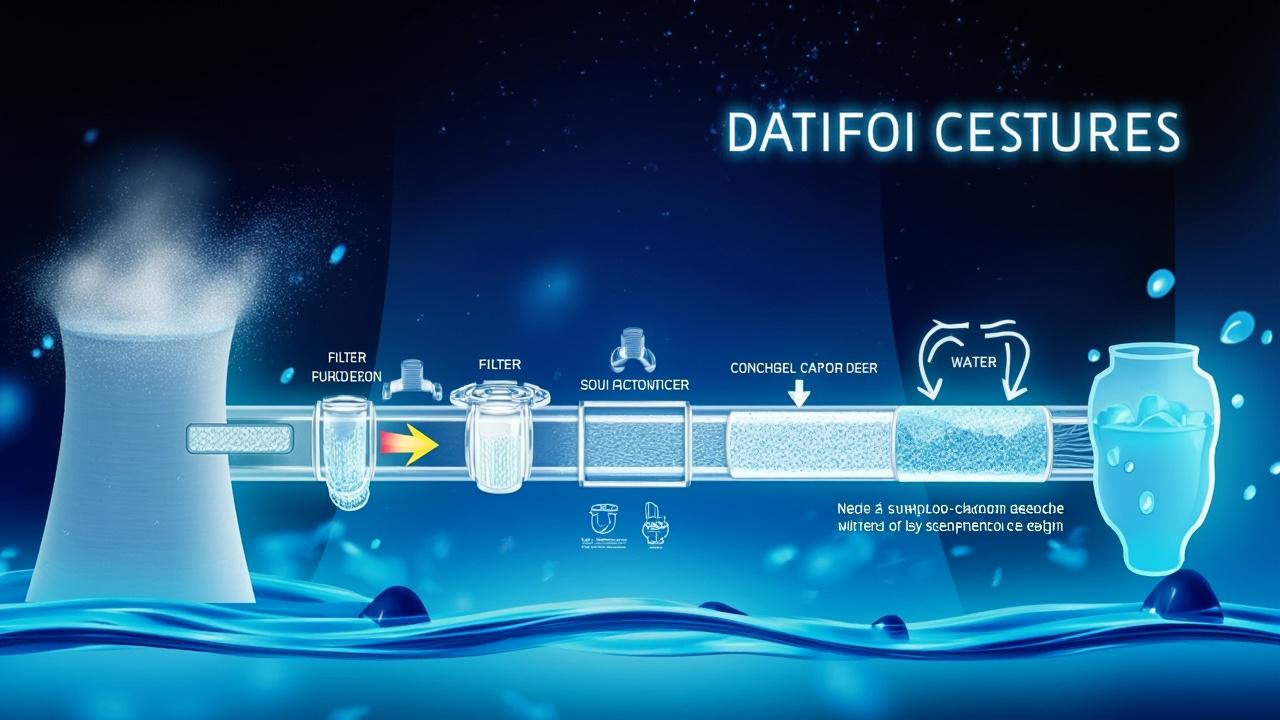
Questions to Ask Yourself
Before moving forward, ask yourself these preliminary questions: How much water does my facility currently consume for cooling purposes? What are my current water and sewer rates? Are there any local or regional regulations that incentivize water conservation or restrict water usage? What is the expected lifespan of my existing cooling equipment?
What is my budget for upgrading or replacing my cooling system? What are the potential risks of water scarcity or increasing water costs in my area? Are there opportunities to integrate the closed-loop system with other building systems, such as rainwater harvesting or grey water reclamation, to further reduce water consumption? Honestly answering these questions will provide valuable insights into the potential benefits and challenges of implementing a closed-loop cooling system in your specific circumstances.
Types of Closed-Loop Cooling Systems
There are several different types of closed-loop cooling systems, each offering unique advantages depending on the specific application. Selecting the right one hinges on factors like cooling load, space constraints, climate, and budget. Understanding the core technologies involved is crucial for making an informed decision.
Cooling towers are a common component. In a closed-loop system, the cooling tower cools the water that has absorbed heat from the process or building. This cooled water is then recirculated. Different types of cooling towers exist.
Forced draft towers use fans to push air through the water, while induced draft towers pull air through. Evaporative cooling towers use the principle of evaporation to cool the water, which can be highly effective but consumes water. This is where water reclamation becomes a crucial point to consider.
Chillers provide another cooling method. Chillers cool a fluid (usually water or a water/glycol mixture) that is then circulated to cool equipment or spaces. Air-cooled chillers reject heat to the surrounding air, while water-cooled chillers require a cooling tower or other means of heat rejection.
Absorption chillers use heat as their energy source, which can be advantageous if waste heat is available. Each of these technologies has different water requirements and can be combined in hybrid systems for maximum efficiency. It’s important to remember that water is still used with chiller based systems in most cases, even if it’s not used directly for cooling the target object.
| Cooling System Type | Description | Key Advantages | Considerations |
|---|---|---|---|
| Cooling Towers (Closed-Loop) | Cools water via evaporation or air contact within a closed circuit. | Efficient heat rejection, suitable for large cooling loads. | Potential for water loss due to evaporation, requires water treatment. |
| Chillers (Closed-Loop) | Cools a fluid (water/glycol) circulated in a closed loop using refrigeration. | Precise temperature control, suitable for diverse applications. | Higher energy consumption compared to some cooling towers, potential for refrigerant leaks. |
| Adiabatic Cooling Systems | Cools air by saturating it with moisture, reducing temperature. | Reduced water consumption compared to evaporative cooling, lower operating costs. | Performance dependent on ambient conditions, may require pre-cooling. |
Implementing a Closed-Loop System
The foundation of any successful closed-loop cooling system lies in meticulous planning and design. Before even considering specific components, a comprehensive engineering assessment is paramount. This assessment should thoroughly analyze your facility’s cooling load requirements, taking into account factors like building size, occupancy patterns, equipment heat output, and local climate conditions. Understanding these parameters will dictate the size and type of cooling system needed.
The design phase should also consider the existing infrastructure, including available space, existing piping, and electrical capacity. Retrofitting an existing facility with a closed-loop system may present unique challenges compared to designing one for a new construction project. Moreover, a detailed hydraulic analysis is essential to ensure proper water flow and pressure throughout the system.
This analysis will help determine the appropriate pipe sizes, pump capacity, and control valve settings. Proper planning will also require investigating opportunities for water reclamation and reuse within the system.
Once the system requirements are defined, the next step is selecting the appropriate components. This involves choosing the right cooling tower or chiller, pumps, heat exchangers, and control systems. Each component should be carefully evaluated based on its performance characteristics, energy efficiency, reliability, and cost-effectiveness. For example, when selecting a cooling tower, consider factors like airflow rate, approach temperature, and drift rate.
When choosing a chiller, evaluate its coefficient of performance (COP) or energy efficiency ratio (EER). Pumps should be sized to provide adequate flow and pressure while minimizing energy consumption. Control systems should be selected based on their ability to accurately regulate temperature, flow, and other critical parameters.
The installation process involves connecting all the chosen components – piping, pumps, cooling tower, and the control system. After this, the system should be thoroughly inspected to ensure all connections are properly sealed and that all components are correctly installed according to the manufacturer’s specifications. Once the installation is complete, the system needs to be properly commissioned. Commissioning involves systematically starting up the system, testing all components, and calibrating the control system.
Water quality should be tested and adjusted to meet the manufacturer’s recommended parameters. This ensures optimal system performance and longevity. Proper commissioning is crucial for identifying and addressing any potential problems before the system is put into full operation. It also confirms the effectiveness of the system’s integrated water reclamation features.
Maintaining Peak Performance
To ensure a closed-loop cooling system operates efficiently and reliably over its lifespan, a comprehensive water treatment and monitoring program is absolutely essential. Without proper attention to water quality, systems can suffer from scale buildup, corrosion, and biological fouling, all of which can drastically reduce heat transfer efficiency, increase energy consumption, and even lead to equipment failure and costly downtime.
The goal of water treatment is to maintain a clean and stable water chemistry that minimizes these risks and maximizes the life of the system components.
There are various water treatment methods available, and the selection should be based on the specific characteristics of the water source, the materials used in the system, and the operating conditions. Chemical treatment is a common approach, involving the addition of inhibitors to prevent corrosion, scale formation, and biological growth. These chemicals can include corrosion inhibitors, scale inhibitors, biocides, and pH adjusters.
Another important aspect of the process is filtration to remove suspended solids and debris that can foul heat transfer surfaces and create environments conducive to microbial growth. Different types of filtration, such as media filters, cartridge filters, and side stream filters, can be used depending on the level of filtration required. UV disinfection represents a environmentally friendly option to control microbiological growth.
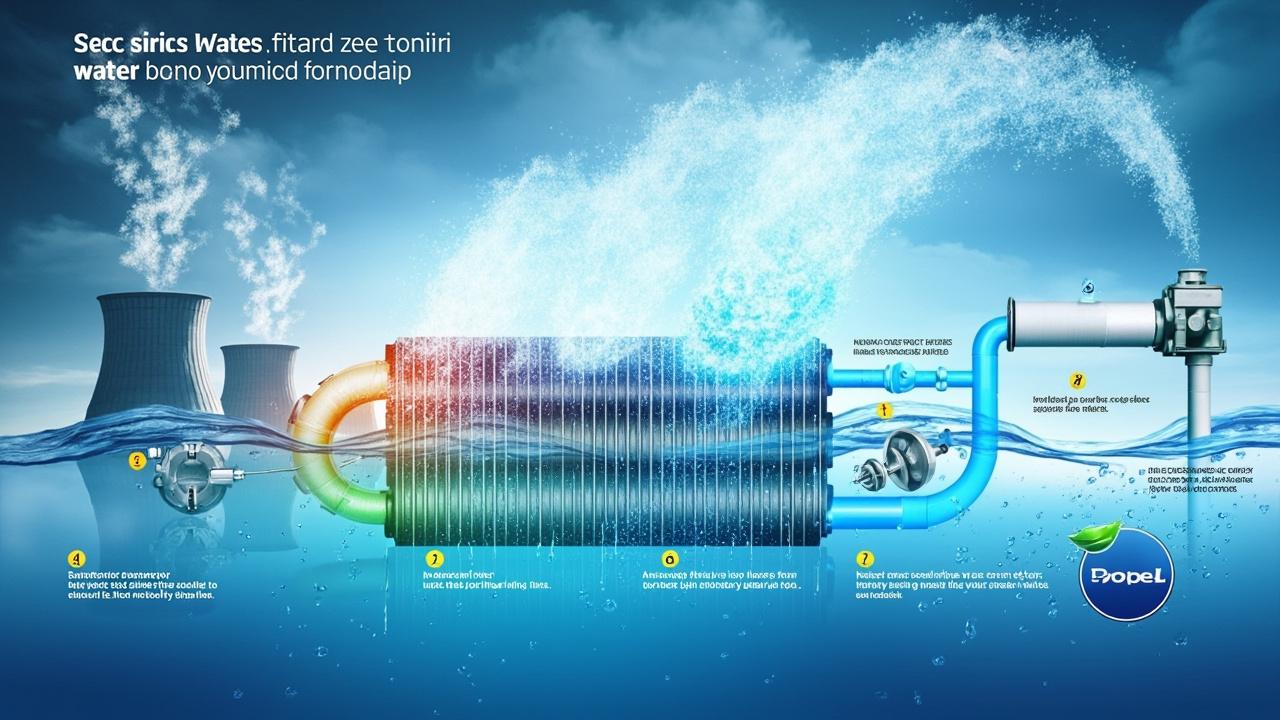
Regular water quality monitoring is critical for verifying the effectiveness of the water treatment program and identifying potential problems early on. Key parameters to monitor include pH, conductivity, total dissolved solids (TDS), alkalinity, hardness, corrosion rates, and biological activity. Monitoring frequency should be determined based on system size, water quality, and operating conditions.
Furthermore, the role of water reclamation processes like reverse osmosis is important because it will increase the effectiveness of the system. By tracking these parameters, facility managers can make informed decisions about adjusting the water treatment program, scheduling maintenance, and preventing costly equipment failures.
The Future of Cooling
The cooling industry is not resting on its laurels; innovation is constantly pushing the boundaries of what’s possible in closed-loop systems. One significant area of development is in advanced water treatment technologies. Traditional chemical treatments, while effective, can have their own environmental drawbacks.
Emerging technologies like membrane filtration, including reverse osmosis and nanofiltration, offer a more environmentally friendly approach by physically separating impurities from the cooling water. These systems can produce extremely high-quality water, reducing the need for harsh chemicals and minimizing blowdown, which is the process of discharging water to remove accumulated impurities. Electrochemical treatment is another promising area, using electricity to remove contaminants and disinfect the water, further reducing reliance on chemicals.
Smart controls and automation are also revolutionizing closed-loop cooling. The integration of smart sensors throughout the system allows for real-time monitoring of key parameters such as water temperature, pressure, flow rate, and water quality. This data is fed into sophisticated control algorithms that can automatically adjust system parameters to optimize performance and efficiency.
For example, the system can automatically adjust the speed of pumps and fans based on the cooling load, minimizing energy consumption. Predictive maintenance is another benefit, as the system can identify potential problems before they occur, preventing costly downtime and repairs.
The use of sustainable materials in closed-loop system components is also gaining traction. Manufacturers are increasingly using recycled materials in the construction of cooling towers, chillers, and piping systems. This reduces the environmental impact of the manufacturing process and promotes a circular economy.
Furthermore, research is being conducted into new materials that offer improved performance and durability, such as high-performance polymers and corrosion-resistant alloys. These materials can extend the lifespan of the system and reduce the need for maintenance and replacement. These innovations combined with effective water reclamation processes will contribute to more sustainable and efficient cooling solutions in the future.
| Technology | Benefits |
|---|---|
| Membrane Filtration (RO, NF) | Reduced chemical use, high-quality water, minimized blowdown |
| Smart Controls & Automation | Optimized performance, predictive maintenance, reduced energy consumption |
| Sustainable Materials | Reduced environmental impact, improved durability, longer lifespan |
Conclusion
The journey toward sustainable cooling solutions doesn’t end here; it begins. By embracing closed-loop systems, facility managers, building owners, and engineers alike can take tangible steps toward a more environmentally responsible and economically sound future.
The potential for water savings, cost reduction, and lessened environmental impact is significant, offering a compelling case for transitioning away from traditional, water-intensive cooling methods. As water resources become increasingly scarce and regulations become stricter, the adoption of closed-loop cooling is not just a best practice; it’s becoming an imperative.
To embark on this transformative path, we encourage you to delve deeper into the specifics of closed-loop cooling and how it can be tailored to your unique facility needs. Consider conducting a thorough assessment of your current cooling system, evaluating the feasibility of implementing a closed-loop alternative, and exploring the various technologies and options available.
This might involve consulting with experienced engineers, reviewing case studies of successful implementations, and researching the latest advancements in water reclamation and cooling system design.
The future of cooling lies in innovation, efficiency, and a commitment to preserving our planet’s precious resources. By adopting closed-loop systems and continually seeking ways to optimize their performance, we can collectively contribute to a more sustainable future for generations to come. Let’s work together to create a world where cooling is not a drain on our resources, but a responsible and efficient practice that supports both our economy and our environment.
Frequently Asked Questions
What is water reclamation and how does it differ from water recycling?
Water reclamation involves treating wastewater to make it suitable for beneficial purposes, often non-potable uses. Water recycling is a broader term that can encompass water reuse within an industrial process or a building. Reclamation typically implies a more comprehensive treatment process to meet specific regulatory standards for designated end uses, distinguishing it from simpler recycling loops.
What are the primary benefits of implementing water reclamation projects?
The primary benefits of implementing water reclamation projects include reducing demand on freshwater sources, conserving water resources, and improving water security, particularly in arid regions. Reclaimed water can also lower the discharge of pollutants into surface waters and can reduce the need for expensive infrastructure projects like new reservoirs or long-distance pipelines.
What are the different treatment technologies used in water reclamation processes?
Various treatment technologies are used in water reclamation, including physical processes like screening and sedimentation to remove solids. Biological treatment methods use microorganisms to break down organic matter. Chemical processes, such as disinfection with chlorine or UV light, eliminate pathogens. Advanced technologies like membrane filtration and reverse osmosis remove dissolved salts and other contaminants for higher quality reclaimed water.
What are the potential uses for reclaimed water, and which uses are most common?
Potential uses for reclaimed water include irrigation for agriculture, landscaping, and golf courses, as well as industrial cooling, toilet flushing, and groundwater recharge. The most common uses are typically agricultural and landscape irrigation, followed by industrial applications, because these applications require less stringent treatment than potable reuse.
What are the potential health and environmental risks associated with using reclaimed water?
Potential health risks associated with reclaimed water use include exposure to residual pathogens, chemicals, or heavy metals if treatment is inadequate or improperly managed. Environmental risks involve the potential for soil salinization from irrigation, nutrient imbalances in aquatic ecosystems, or the spread of pharmaceutical compounds. Careful monitoring and appropriate treatment processes are necessary to mitigate these risks.


